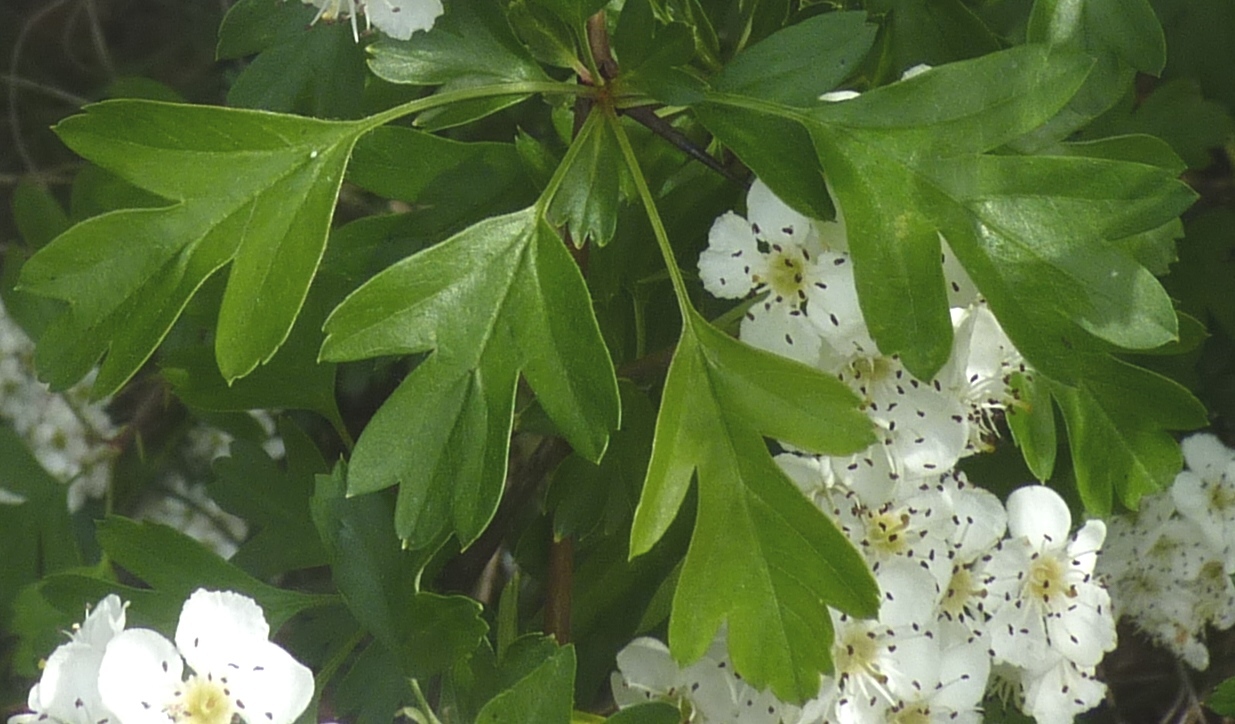
Greek kratos — strength, referring to the sturdy wood.
Deciduous or occasionally evergreen small trees and large shrubs, often thorny. Leaves alternate, mostly deciduous, lobed and/or toothed; stipules present. Flowers mostly in flat-topped clusters on short lateral shoots, occasionally solitary. Petals and sepals 5 on a disk around the margin of the hypanthium. Stamens 5-25.ovary inferior. Styles 1-5, free or united. Carpels 1-5, united and with 1-5 chambers. Fruit a small apple-like yellow, red, orange or dark blue to nearly black drupe containing 1-5 bony nutlets.
Grown as small specimen trees, or for hedging, ornamental fruit and autumn leaf colour.
Unfortunately hawthorns can act as host to bacterial fireblights that attack pome fruits and, as they are not particularly ornamental, their use is of dubious value.
Various hybrids and cultivars have been introduced and records of these are poor. This makes identification difficult and unusual specimens may be encountered.
C. ×persimilis Sarg. 'Prunifolia' is occasionally listed and is grown for its glowing red autumn foliage. ['MacLeod']
Species by seed but cultivars and hybrids by cuttings and grafting.
Fruits are sometimes used for their medicinal properties and occasionally for preserves.
SA: Glen Osmond (Waite Institute); Mt Gambier ('Carrick Hill').
Ovary inferior; fruit containing 1-5 hard nutlets.
About 1000 species; northern temperate, with many species in E North America.
Source: (2002). Rosaceae. In: . Horticultural Flora of South-eastern Australia. Volume 3. Flowering plants. Dicotyledons. Part 2. The identification of garden and cultivated plants. University of New South Wales Press.
